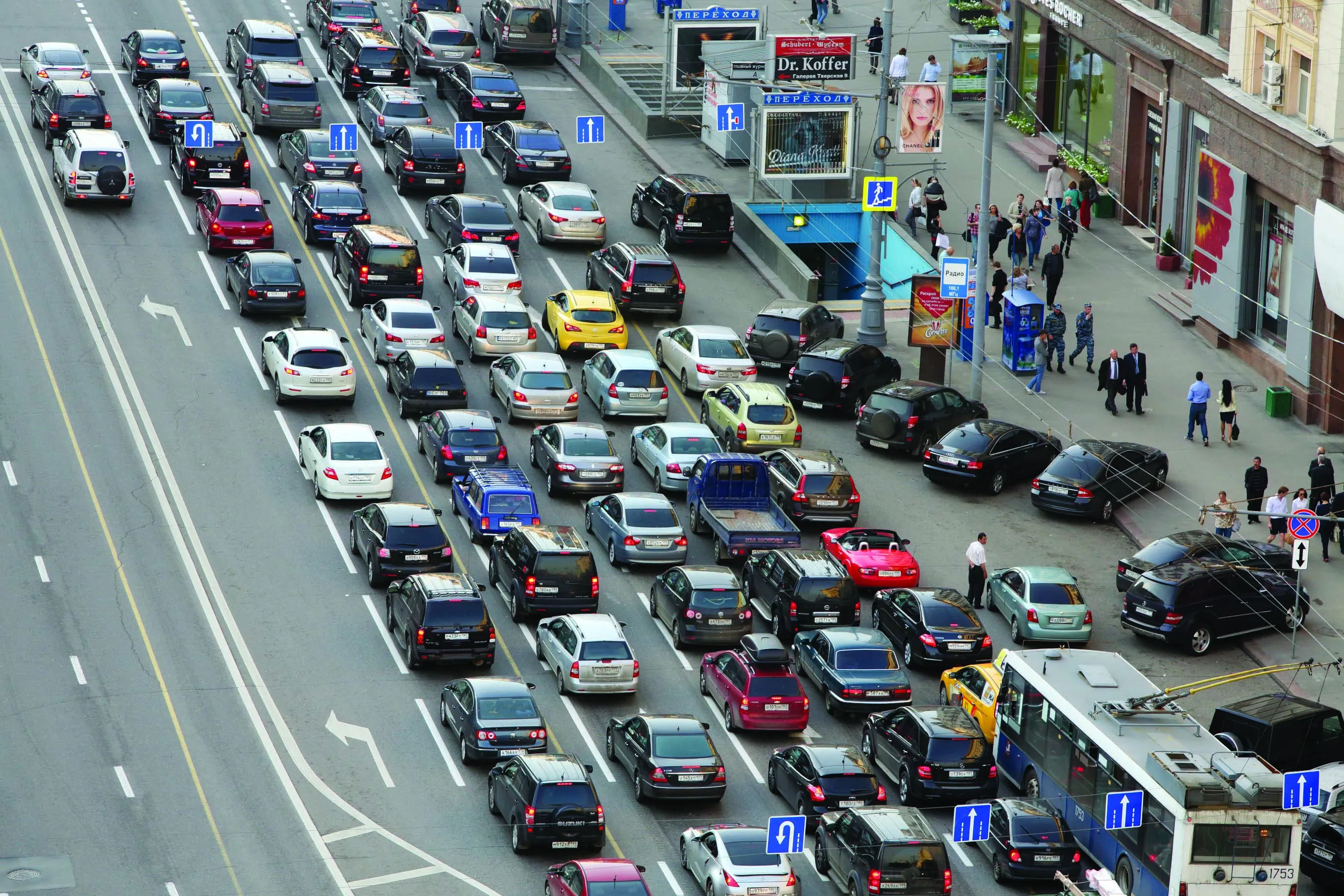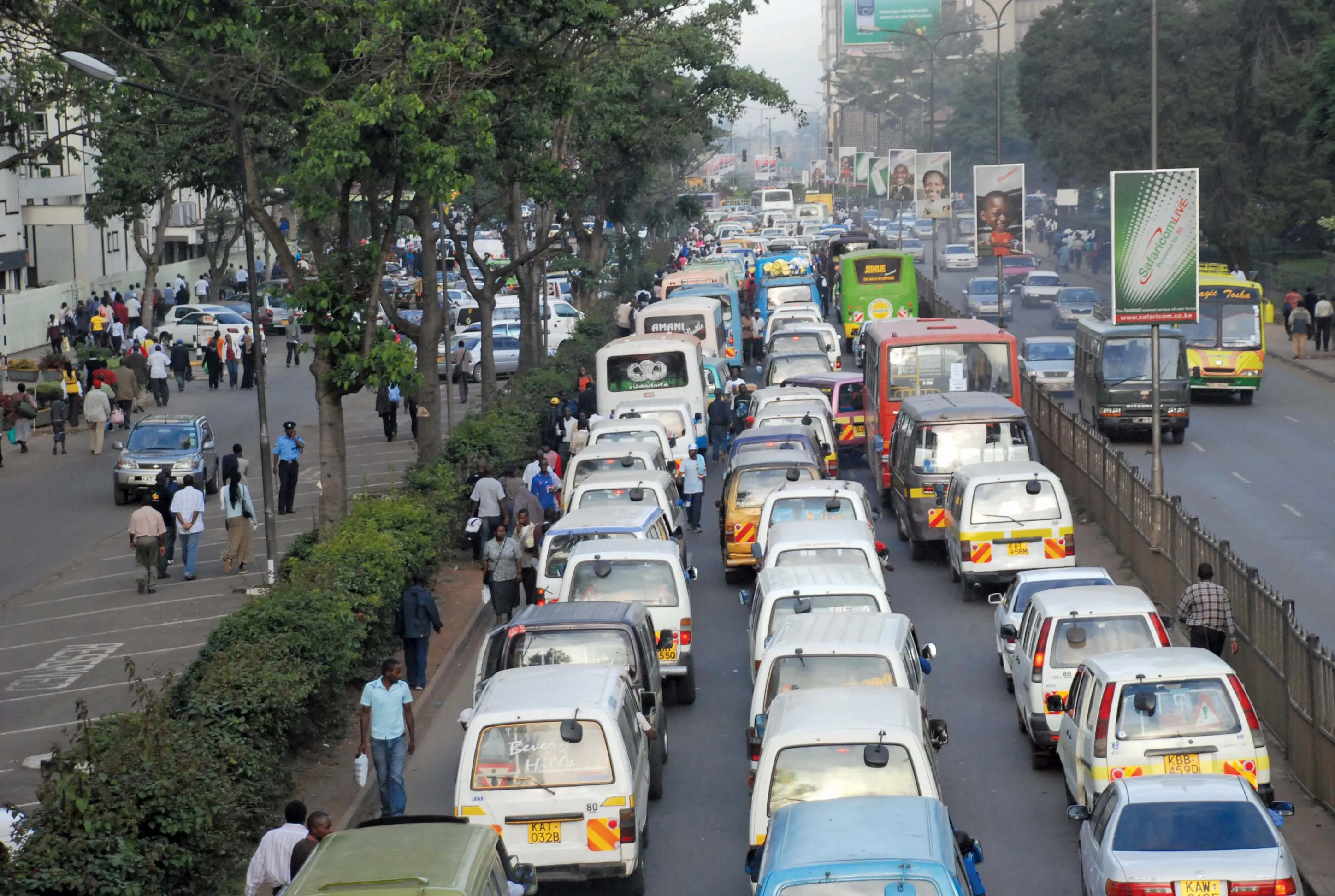Huge investments being made in building several outbound routes in Moscow and the Moscow region – Eugene Gerden writes.
Up to US$20 billion (900 billion Roubles) will be invested in the building of several outbound routes in Moscow and the Moscow region during the next few years, according to an official spokesperson of the Russian Ministry of Transport.
It is planned that the routes will be built as flyovers above the railroad tracks in the Yaroslavl, Kazan, Riga and Paveletskaya directions of the
May 1, 2015
Read time: 6 mins

Huge investments being made in building several outbound routes in Moscow and the Moscow region – Eugene Gerden writes
Up to US$20 billion (900 billion Roubles) will be invested in the building of several outbound routes in Moscow and the Moscow region during the next few years, according to an official spokesperson of the Russian Ministry of Transport.
It is planned that the routes will be built as flyovers above the railroad tracks in the Yaroslavl, Kazan, Riga and Paveletskaya directions of the Moscow railway. This is a subsidiary of national railway monopoly Russian Railways, which handles half of Russia's suburban railway operations and a quarter of the country's passenger traffic.
The first road will be built along the Yaroslavl route of the Moscow railway, a line stretching north-east of the city through the Moscow and Vladimir regions.
All of the flyovers will be built at a height of 11-20m above the rail so as to provide adequate clearance. These will be toll roads, with the fee of $0.08/km (4-6 Roubles/km). The cost of building each road varies in the range of $5-5.5 billion (RUB 200-210 billion). Each road will be designed with two lanes in each direction with junctions to connect to the surrounding road network. It is planned that the majority of funds for the projects will be provided by private investors.
According to the preliminary design work for these new routes, all of the roads will start from Moscow rail stations and run above existing railroad tracks. At present the Moscow Government is considering a number of options for the endpoints of the new roads. There is a possibility that the new roads may reach the Moscow Ring Road, the Central Ring Road, or other road links in the Moscow region.
According to plans of the Moscow City Government, the building of new roads will significantly improve the traffic situation and will help to partially solve the problem of congestion, which has become serious in recent years, particularly at peak periods. In addition, the new roads should link the transport networks of Moscow and its surrounding regions into a single system.
It is planned that a feasibility study of the project will be completed by Giprostroymost, one of Russia’s leading bridge and road-building companies. Among the other participants in the project are expected to be Russian Railways (RZD), the Government of Moscow and the State Company Russian Highways, which is the Russian state infrastructure and highway service company.
Implementation of the project will be overseen by Arkady Dvorkovich, Russia’s Deputy prime minister. According to an official spokesperson for the Moscow City Government, building such highways is the last resort for the expansion of its transport capacity.
The spokesperson said that the authorities in Moscow will never give permission to build new roads on the territory of national parks and close to residential areas. One of the possible options could involve building of new roads in Moscow's numerous industrial areas and zones. However, in contrast to railways, the majority of them are not linear, and the construction of roads on their territory will not allow to solve the problem.
In the meantime, leading Russian analysts in the field of engineering and road building have already welcomed the new plans of the Moscow Government.
According to Vladimir Nosov, head of the department of construction and operation of roads of the Moscow State Automobile and Road Technical University (MADI), the building of new road links is an acute need for the city. Nosov commented that such highways currently exist in many large cities of the world, including New York, Tokyo and some others. He has also added that building these highways is the only way to increase the capacity of the city’s road network. At the same time building of new highways will help the Moscow Government to establish new bus routes and will contribute to the growth in the use of public transport among the local citizens.
The same position is shared by Sergei Kanaev, director of the national public safety center, one of Russia’s leading public associations in the field of traffic control and road building. He believes that the new highways will be very popular among the local citizens. Kanaev commented, “At present the number of cars in the Moscow region is growing steadily, along with the number of wealthy people. People will definitely appreciate the new highways, regardless of their price/km. At the same time it would be more reasonable to build wider highways that will have at least three lanes in each direction.”
However some transport specialists hold a contrary view. Alexander Kulakov, deputy director of the laboratory of transport systems of MADI, believes that building such highways will not be able to solve the problem of traffic jams in the city. Kulakov instead believes that the Moscow Government should focus on the further development of the existing city road network.
Kulakov commented, “At present Moscow experiences a lack of common roads, and this leads to heavy congestion. Of course, there is a need to build new highways in the city, however this should take place after the development of the city’s existing street and road network. Otherwise there will be a need to build a lot of entries and exits for such highways. This may result in the fact that these roads will no longer be high-speed and will be subject of traffic jams, similar to the Moscow Ring Road.”
It is planned that implementation of the project may be started already in the first or the second quarter of the current year. At the same time, according to some sources in the Moscow City Government, implementation may be delayed, due to the fact that building of such roads is a new experience for Moscow, which will require a significant number of additional approvals from regulatory agencies.
In addition, according to Catherine Reshetova, a senior fellow at the Center of Transport Economics of the Russian Higher School of Economics, the building of new highways may significantly restrict traffic in the central part of the city. According to Reshetova, the new roads will have a large capacity, however they will be linked with the old road network in the downtown area of Moscow, which may pose a threat for even bigger and more extensive traffic jams.
Analysts of the Russian Ministry of Transport believe that the government may be faced with serious problems in attracting investors to the project, mainly due to the long expected payback period. The situation is aggravated by the fact that investors will not be able to use roadside infrastructure, due to their location above the ground.
Among the potential investors are Russian gas giant Gazprom, as well as several leading real estate developers, and in particular the Morton Group of Companies, Absolut and some others.
There is also the possibility of participation of some EU engineering and road building companies in the implementation of the project, although possible names of firms have not been disclosed at this stage. There is enormous potential for European firms in Russia, although the current political tensions between Russia and the EU would have to improve before any progress could be made.
According to Alexey Skopin, head of the department of regional economics of Higher School of Economics, the EU road building market is close to saturation, while implementation of Russian projects provide additional opportunities for the EU investors, due to planned high traffic of the new roads and their favourable location. Implementation on all the projects is expected to be completed by 2020-2022.
Up to US$20 billion (900 billion Roubles) will be invested in the building of several outbound routes in Moscow and the Moscow region during the next few years, according to an official spokesperson of the Russian Ministry of Transport.
It is planned that the routes will be built as flyovers above the railroad tracks in the Yaroslavl, Kazan, Riga and Paveletskaya directions of the Moscow railway. This is a subsidiary of national railway monopoly Russian Railways, which handles half of Russia's suburban railway operations and a quarter of the country's passenger traffic.
The first road will be built along the Yaroslavl route of the Moscow railway, a line stretching north-east of the city through the Moscow and Vladimir regions.
All of the flyovers will be built at a height of 11-20m above the rail so as to provide adequate clearance. These will be toll roads, with the fee of $0.08/km (4-6 Roubles/km). The cost of building each road varies in the range of $5-5.5 billion (RUB 200-210 billion). Each road will be designed with two lanes in each direction with junctions to connect to the surrounding road network. It is planned that the majority of funds for the projects will be provided by private investors.
According to the preliminary design work for these new routes, all of the roads will start from Moscow rail stations and run above existing railroad tracks. At present the Moscow Government is considering a number of options for the endpoints of the new roads. There is a possibility that the new roads may reach the Moscow Ring Road, the Central Ring Road, or other road links in the Moscow region.
According to plans of the Moscow City Government, the building of new roads will significantly improve the traffic situation and will help to partially solve the problem of congestion, which has become serious in recent years, particularly at peak periods. In addition, the new roads should link the transport networks of Moscow and its surrounding regions into a single system.
It is planned that a feasibility study of the project will be completed by Giprostroymost, one of Russia’s leading bridge and road-building companies. Among the other participants in the project are expected to be Russian Railways (RZD), the Government of Moscow and the State Company Russian Highways, which is the Russian state infrastructure and highway service company.
Implementation of the project will be overseen by Arkady Dvorkovich, Russia’s Deputy prime minister. According to an official spokesperson for the Moscow City Government, building such highways is the last resort for the expansion of its transport capacity.
The spokesperson said that the authorities in Moscow will never give permission to build new roads on the territory of national parks and close to residential areas. One of the possible options could involve building of new roads in Moscow's numerous industrial areas and zones. However, in contrast to railways, the majority of them are not linear, and the construction of roads on their territory will not allow to solve the problem.
In the meantime, leading Russian analysts in the field of engineering and road building have already welcomed the new plans of the Moscow Government.
According to Vladimir Nosov, head of the department of construction and operation of roads of the Moscow State Automobile and Road Technical University (MADI), the building of new road links is an acute need for the city. Nosov commented that such highways currently exist in many large cities of the world, including New York, Tokyo and some others. He has also added that building these highways is the only way to increase the capacity of the city’s road network. At the same time building of new highways will help the Moscow Government to establish new bus routes and will contribute to the growth in the use of public transport among the local citizens.
The same position is shared by Sergei Kanaev, director of the national public safety center, one of Russia’s leading public associations in the field of traffic control and road building. He believes that the new highways will be very popular among the local citizens. Kanaev commented, “At present the number of cars in the Moscow region is growing steadily, along with the number of wealthy people. People will definitely appreciate the new highways, regardless of their price/km. At the same time it would be more reasonable to build wider highways that will have at least three lanes in each direction.”
However some transport specialists hold a contrary view. Alexander Kulakov, deputy director of the laboratory of transport systems of MADI, believes that building such highways will not be able to solve the problem of traffic jams in the city. Kulakov instead believes that the Moscow Government should focus on the further development of the existing city road network.
Kulakov commented, “At present Moscow experiences a lack of common roads, and this leads to heavy congestion. Of course, there is a need to build new highways in the city, however this should take place after the development of the city’s existing street and road network. Otherwise there will be a need to build a lot of entries and exits for such highways. This may result in the fact that these roads will no longer be high-speed and will be subject of traffic jams, similar to the Moscow Ring Road.”
It is planned that implementation of the project may be started already in the first or the second quarter of the current year. At the same time, according to some sources in the Moscow City Government, implementation may be delayed, due to the fact that building of such roads is a new experience for Moscow, which will require a significant number of additional approvals from regulatory agencies.
In addition, according to Catherine Reshetova, a senior fellow at the Center of Transport Economics of the Russian Higher School of Economics, the building of new highways may significantly restrict traffic in the central part of the city. According to Reshetova, the new roads will have a large capacity, however they will be linked with the old road network in the downtown area of Moscow, which may pose a threat for even bigger and more extensive traffic jams.
Analysts of the Russian Ministry of Transport believe that the government may be faced with serious problems in attracting investors to the project, mainly due to the long expected payback period. The situation is aggravated by the fact that investors will not be able to use roadside infrastructure, due to their location above the ground.
Among the potential investors are Russian gas giant Gazprom, as well as several leading real estate developers, and in particular the Morton Group of Companies, Absolut and some others.
There is also the possibility of participation of some EU engineering and road building companies in the implementation of the project, although possible names of firms have not been disclosed at this stage. There is enormous potential for European firms in Russia, although the current political tensions between Russia and the EU would have to improve before any progress could be made.
According to Alexey Skopin, head of the department of regional economics of Higher School of Economics, the EU road building market is close to saturation, while implementation of Russian projects provide additional opportunities for the EU investors, due to planned high traffic of the new roads and their favourable location. Implementation on all the projects is expected to be completed by 2020-2022.









